Baltimore, Maryland, has become a regular stop on our RV trips, since our youngest daughter and her family are there temporarily while her husband finishes his residency at Johns Hopkins. So, we’ve decided to explore a different part of the area on each visit, and we chose to start with the Eastern Shore of the Chesapeake Bay – the coastal side of Maryland!
After bidding farewell to the kids, we headed out of the city and over the bridge near Annapolis to reach Kent Island on the Eastern Shore. The city crowds and bridge traffic soon gave way to open fields and small towns. It was hard to believe such a big change in scenery was just over the bridge from the city.
We set up camp at Tuckahoe State Park. It was wooded and quiet, and offered a decidedly different atmosphere from the waterfront RV resort we had just left in Abingdon. The three Maryland state parks that we have visited are really beautiful, with thick woods, lots of hiking trails, and tranquil waterfalls. Like many parks we’ve visited around the country, they offer electrical hookups for RVs, but often do not offer dedicated water hookups. That just means we have to be more aware of our freshwater tanks, and refill as needed.
Though the Eastern Shore is part of the Delmarva Peninsula and shared with Delaware and Virginia, Maryland’s portion defines the states’ eastern border. It offers access to the Atlantic Ocean, with a vibrant beach scene, seaside resort towns, and amazing fishing, but it is the Chesapeake Bay that gives this part of Maryland its character.
From Harve de Gace in the north to Virginia Beach in the south, the Chesapeake Bay spans 200 miles. It was formed by glaciers about 10,000 years ago. The melting ice flooded the Susquehanna River valley, splitting the area known today as Maryland into two segments. Today, half of the Bay’s water comes from a huge watershed that ranges from Cooperstown, New York, to Norfolk, Virginia, and includes six states. The other half of the Bay’s water is from the Atlantic Ocean, making the Chesapeake Bay the largest estuary in the United States and third-largest in the world.
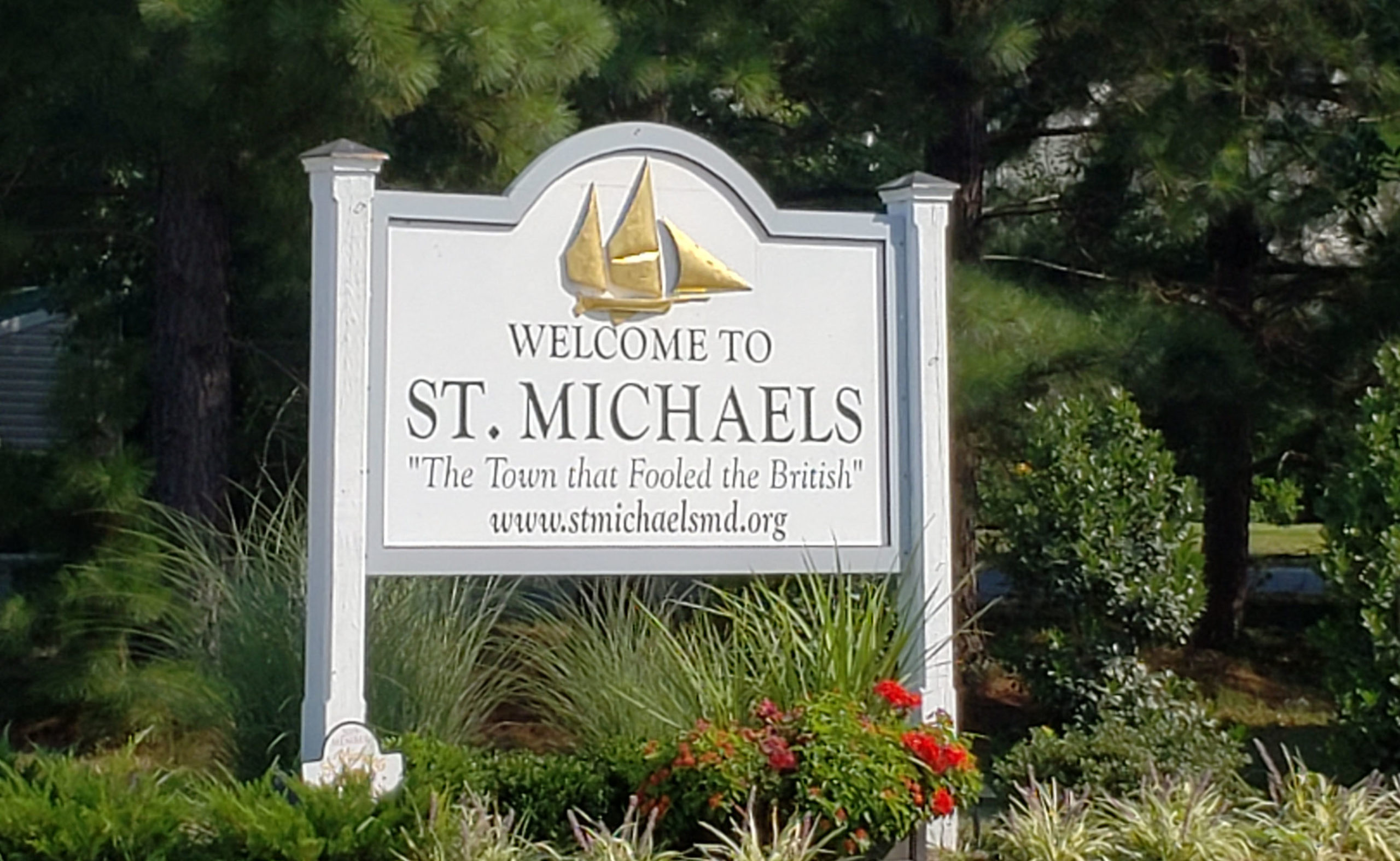
From our campsite, a thirty-minute drive southwest on the Eastern Shore led us to the tiny hamlet of Saint Michaels. Situated among farmland, forest, and the eastern edge of the Chesapeake Bay, Saint Michaels started as a trading post back in the 1600s. The town has a storied history, including the moniker “The town that fooled the British”, a reference to the War of 1812.
It seems the townspeople learned about a fleet of British ships planning to attack the area with cannon fire. Imaginative and resourceful, the townsfolk hung lanterns in the treetops beyond the town and kept the actual town buildings dark. The ruse fooled the British into overshooting the town’s buildings and shipyards.
Saint Michaels had six shipbuilders actively working during the War of 1812, and was known for a fast-moving style of schooner named the Baltimore Clipper. This ship design was capable of evading blockades and outrunning pirates, and was later used for privateer ships licensed by the government to attack and capture enemy vessels. The shipyards producing these fast ships were the reason Saint Michaels became a target for the British Navy’s attack.
From the earliest time, Saint Michaels’ economy focused on the sea. Shipbuilding and seafood were its primary industries, with delicious treasures like oysters, blue crab, and rockfish making up a big part of the local catch. But it is the town’s history of shipbuilding that attracted us. We had read about the Chesapeake Bay Maritime Museum, and thought it might give us a better perspective on the area. As we drove down the tidy main street, we noticed the charming shops and cafes. I made a mental note to save a bit of time to explore the town before returning to camp.
We arrived at the Museum’s generous parking area and found a shady spot for the Unity. We entered through a white clapboard building, where we reviewed the options for the day: general admission, or one of the many programs offered for summer visitors. We toyed with the idea of signing up as a shipwright’s apprentice for the day, but decided it might be better if we got our bearings first!
The Maritime Museum is a collection of buildings, exhibits, and hands-on work. It was founded in 1965, on what was once the site of several very busy seafood packing houses, and the Museum documents this part of the site’s history with ten buildings dedicated to displays on oystering, crabbing, and the history of navigation on the Chesapeake Bay. They also have a research library with more than 10,000 volumes, as well as the largest collection of Chesapeake Bay watercraft in existence. Eleven of the collection’s largest vessels are docked in the Museum’s harbor.
Our first stop was a huge barn marked as the entrance to the shipbuilding area, so we ventured inside to watch a master shipwright at work. He was part of a team reconstructing a historic vessel, the Maryland Dove, which is one of the ships that began the Maryland Colony in 1634.
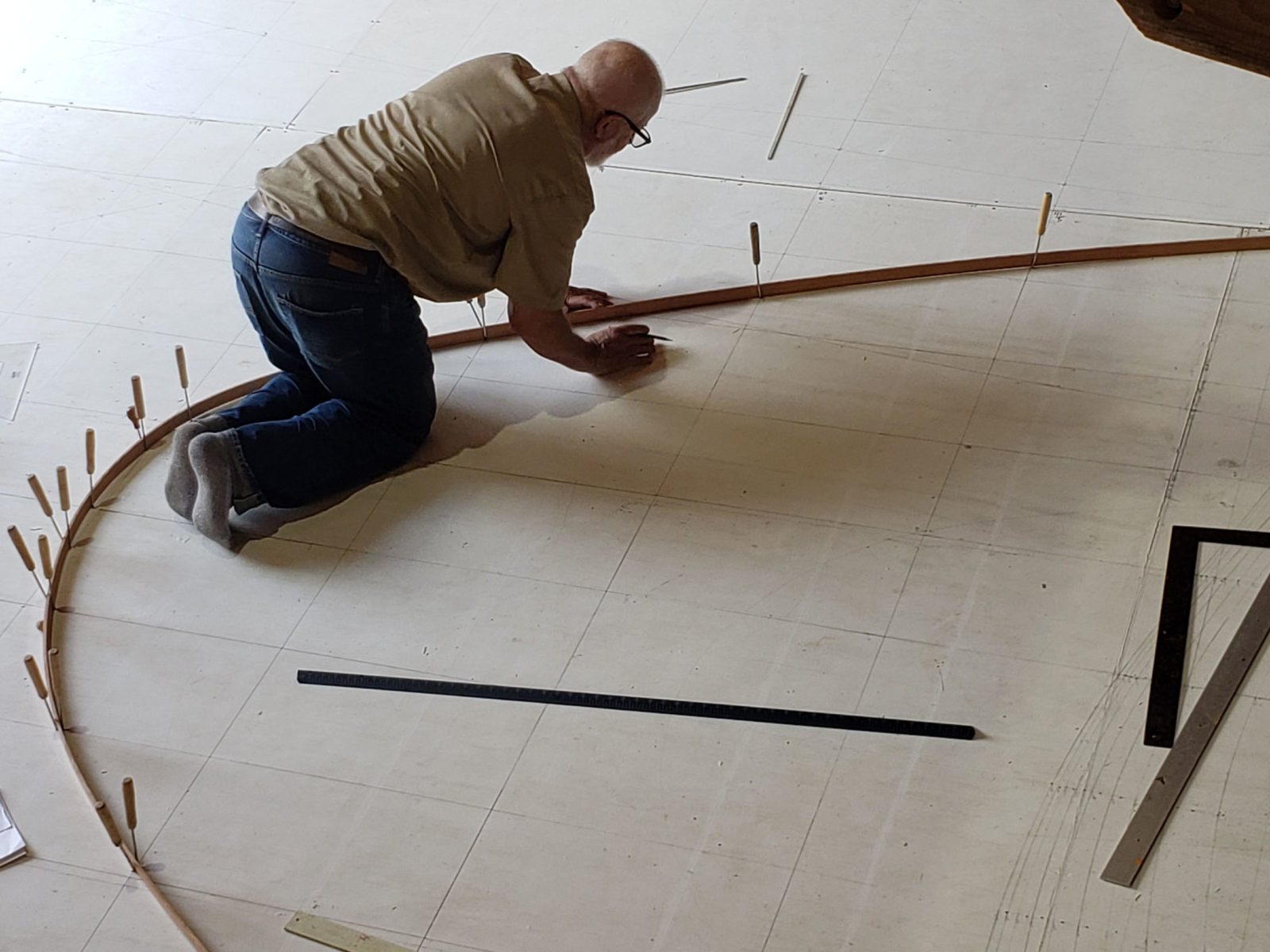
It was difficult to figure out what he was doing crawling around on the floor with a ball of string, a hammer, nails, and a pencil. So, we climbed the stairs to a catwalk above to get a better view. Ah, it all came into focus; he was outlining the deck of the ship. It was amazing to watch him work, referring to sketches and transferring the information to the wood beneath him, measuring and marking to scale. It is meticulous work. Just steps away were a handful of volunteers and “shipwright’s apprentices”, laying out the hull of the ship with huge timbers. It will be months before the vessel takes shape, but we could discern the size and marvel at what they will accomplish.
In the center of the exhibits stands a lighthouse overlooking the small harbor. The Hooper Strait Lighthouse was moved from the middle of the Chesapeake Bay to this site after the Light had been decommissioned. Of course, we were curious to see the interior, and we climbed the stairs to wander around each floor until we reached the light at the top.
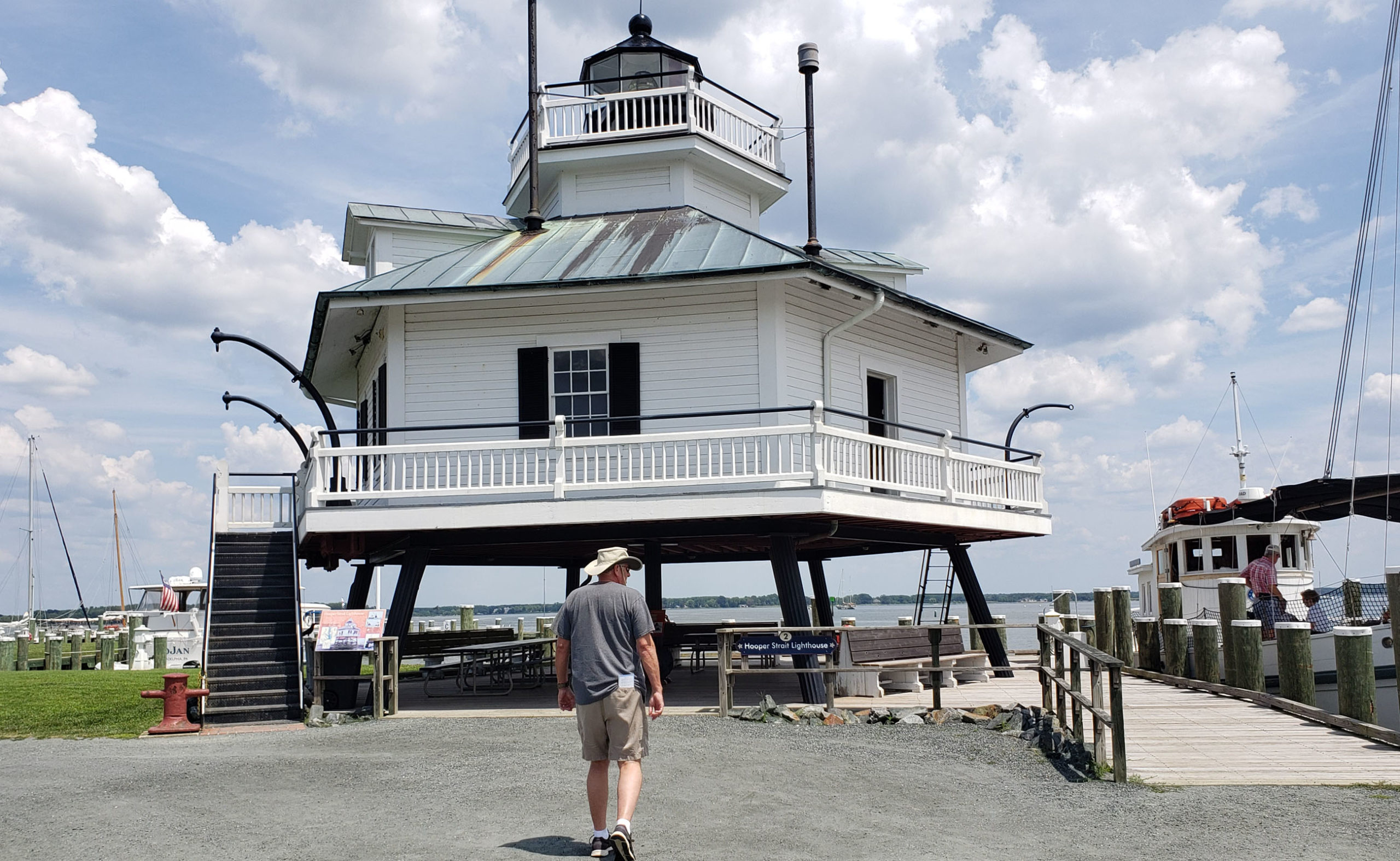
From that vantage point, we could see a huge swath of the Chesapeake Bay before us, with sea birds sailing on the breeze, the expanse of open water, the distant shore, and boats of all sizes making their way to or from the harbor below. Jim and I toured the keeper’s quarters and realized he must have been a “jack of all trades” to be so isolated and have to keep the light, maintain the building, and provide for himself. At least fish, oysters, and crab were plentiful!
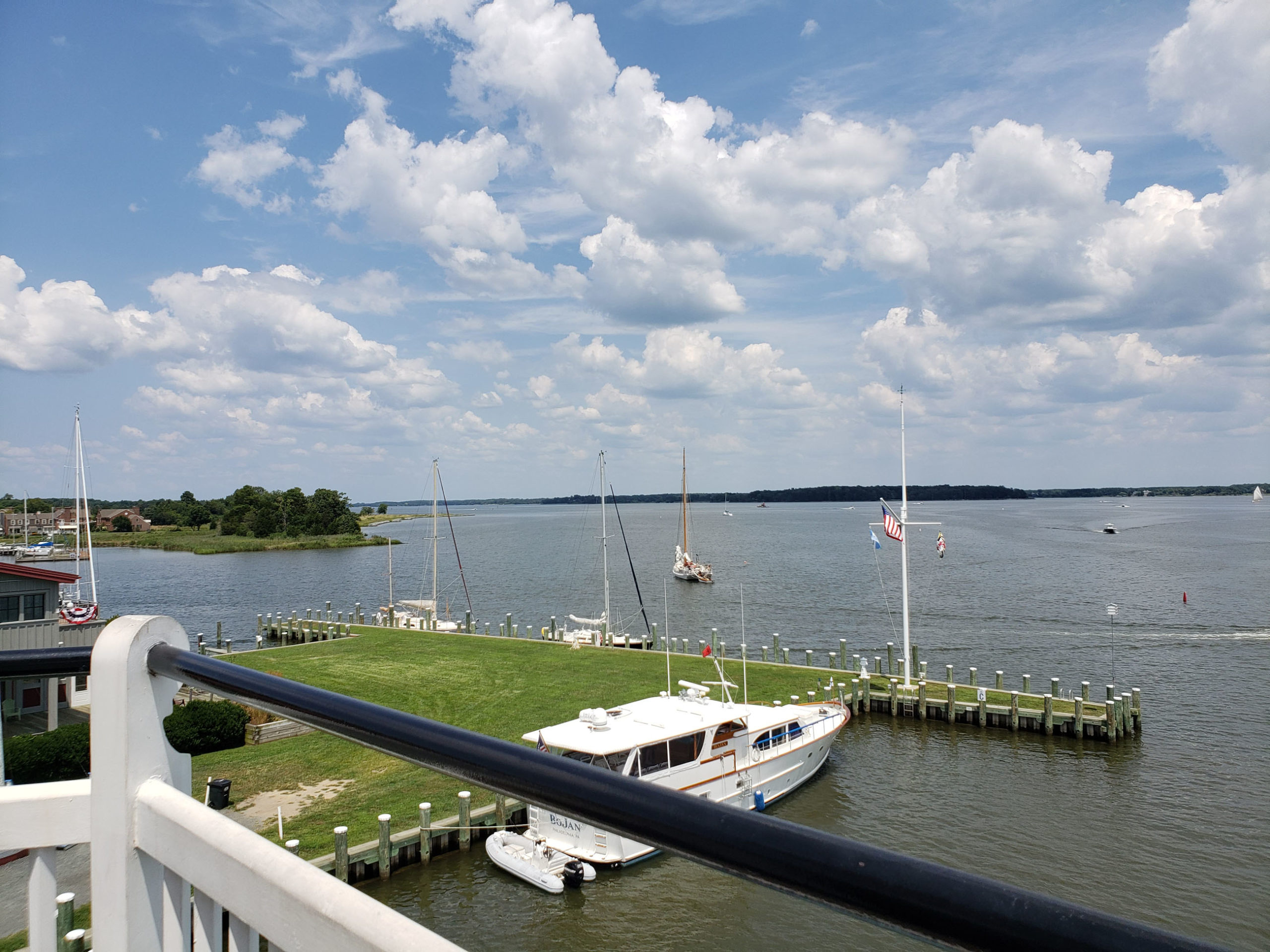
There was a wonderful photographic exhibit about the role of women on the Bay called, “On Land and Sea: A Century of Women”. The exhibit was organized to celebrate The Year of Women in Maryland for 2020. We also enjoyed the fine collection of small sailboats, speed boats, and cabin cruisers. It was fun to get up-close to the vessels, and even go aboard several to imagine sailing on the Chesapeake. And there is so much more to see – the Museum is a full day’s activity in itself. But, we wanted to see the rest of Saint Michaels and get a feel for the town, so we left the Museum and headed for the main street.
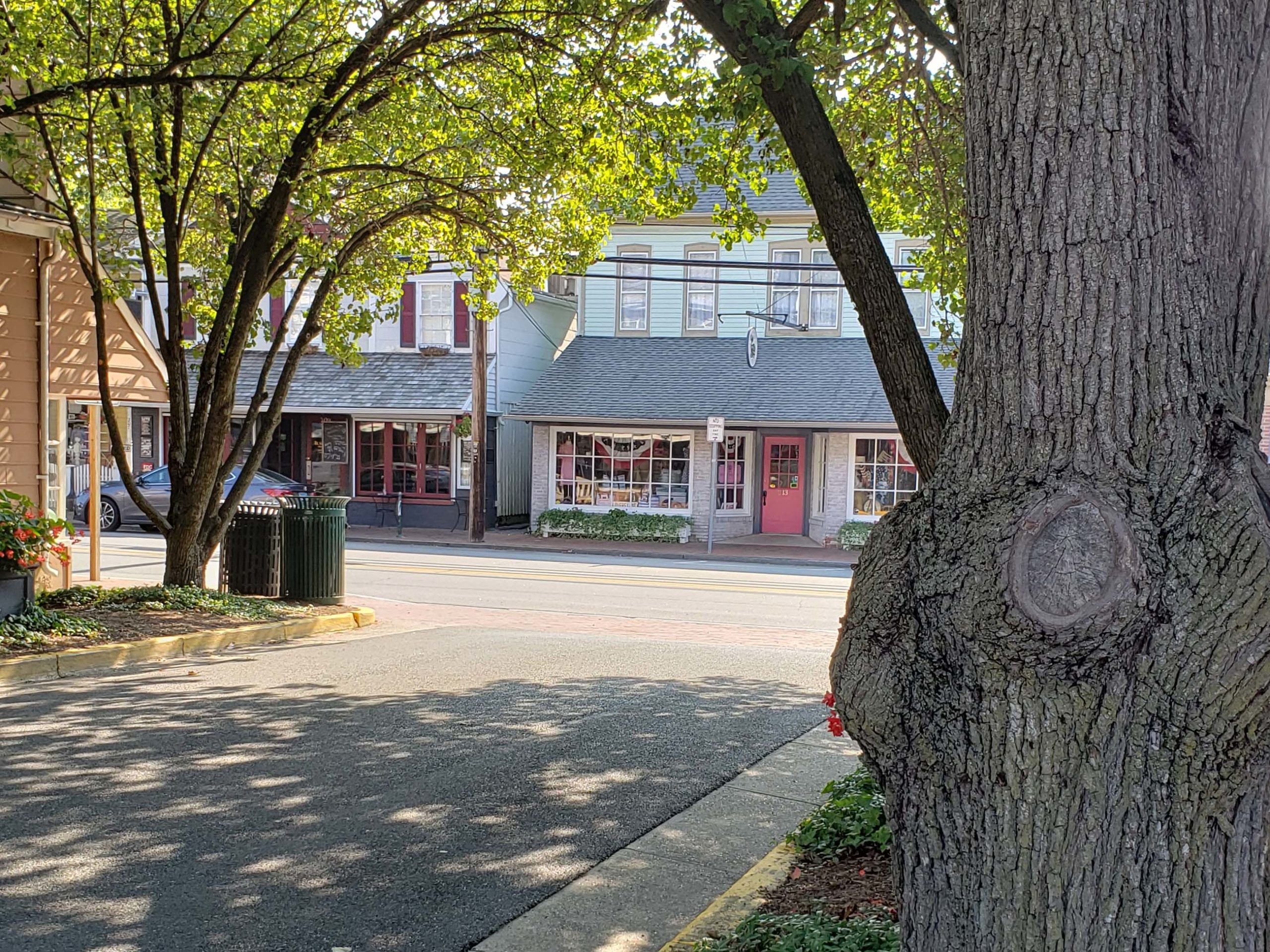
Curious shops and regular businesses stand side-by-side all along the main street. Narrow alleyways offer paths from block to block, and are decorated with gas street lamps, old trees, and lots of flower boxes. The alleys are a great way to avoid the summer crowds on the main street and navigate the town on foot. Everywhere we turned was another “Instagram moment” – public art, flowers spilling over their baskets, inviting sidewalk cafes, quaint street signs, and a lovely church in the center of it all.
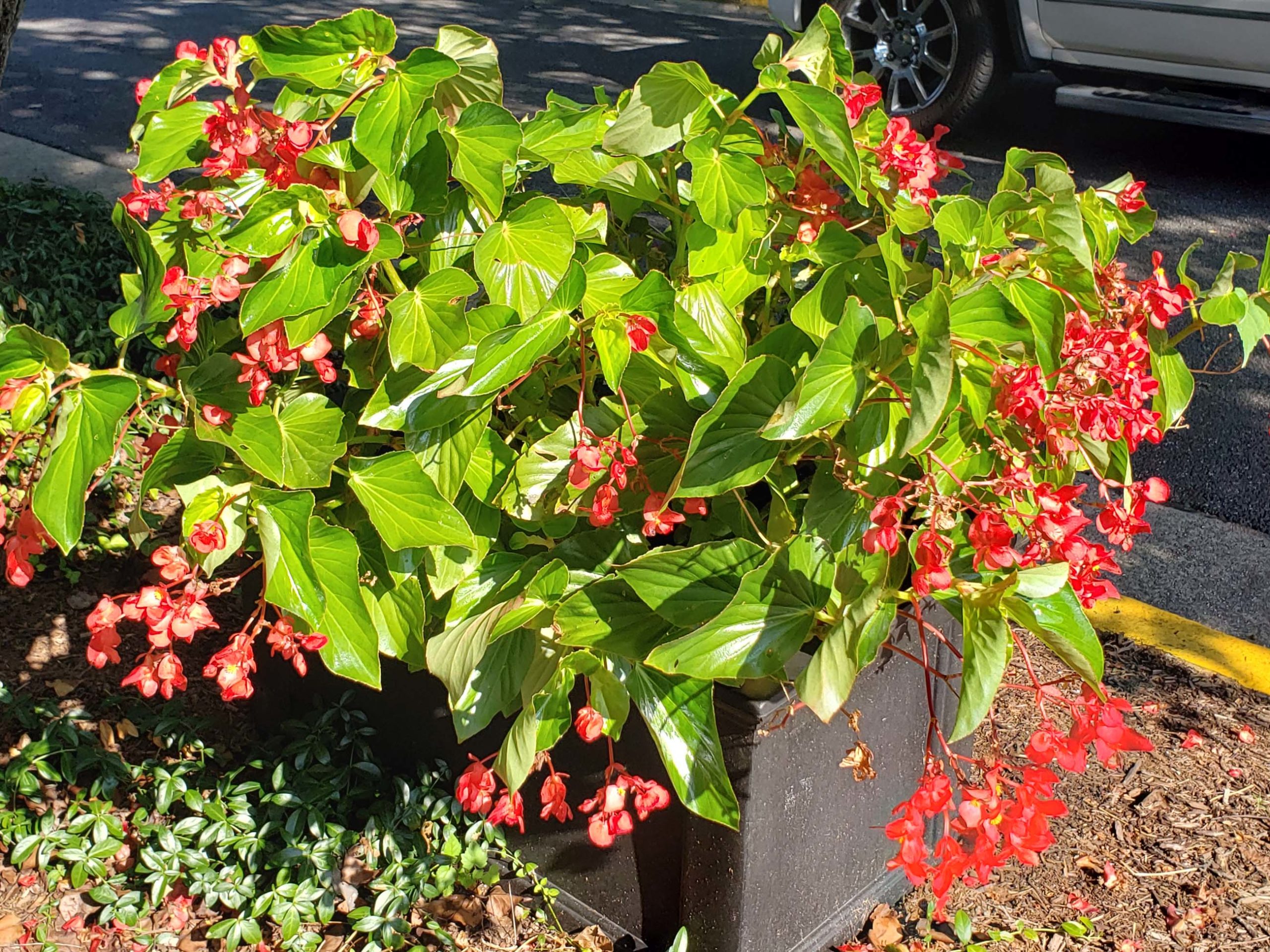
That would be Christ Episcopal Church of Saint Michael Archangel parish, in the center of Saint Michaels. The church was established in 1672, and lends its name to the tiny town. Stately and cloaked in leafy trees, it serves as the anchor of the town square. The scene is at once familiar and otherworldly, as if we had been dropped into a street scene from a novel. We spent an hour or so just wandering the shops and exploring the alleyways. St. Michaels was a last-minute addition to our trip itinerary and, since we wanted to spend more time there, we decided to return in the morning before heading on to our next destination.
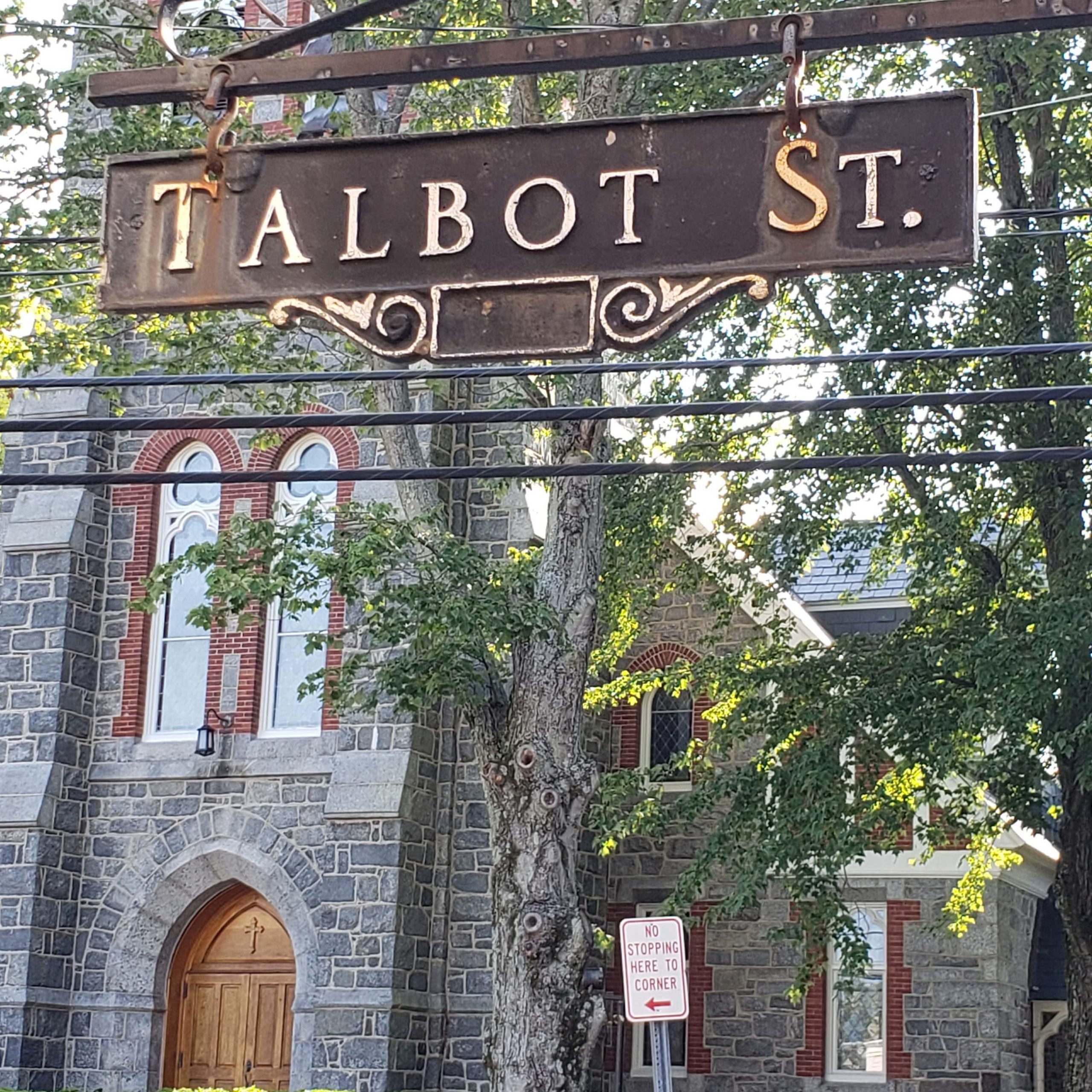
The next morning was cool and sunny as we left the state park, and the traffic was very light. We were in Saint Michaels early and enjoyed breakfast at a little sidewalk cafe, where we sat watching the passersby and listening to… ukulele music? As a ukulele player myself, I was delighted. I asked our waitress why they chose ukulele music, and she told us the owner had spent time in Hawaii and loved the laid-back vibe the music offered. I couldn’t agree more!
After breakfast, we wandered down the street, passing a winery complete with outdoor seating and an inviting tasting room. It was too early for wine tasting, but we knew we would be back, so we penciled in a reminder to visit the winery on our next visit to Baltimore. Great Shoals Cellars is an Eastern Shore winery located just around the corner from the Saint Michaels tasting room. It is named after the Great Shoals Light that once guided ships at the mouth of the Wicomico River. The wines are locally produced, so tasting them is like tasting Saint Michaels!
The Saturday farmer’s market, just one street over from Main, is a treat to browse, with stalls of fresh local produce, tantalizing baked goods, and homemade jams and jellies. We bought a loaf of fresh olive bread to have with our dinner on the road. As we walked through yet another flower-bedecked alley, we stopped to talk with a local couple who told us about the Saturday “Cars and Coffee” event. Car buffs that we are, we were quite familiar with the type of event and eagerly sought out the location.
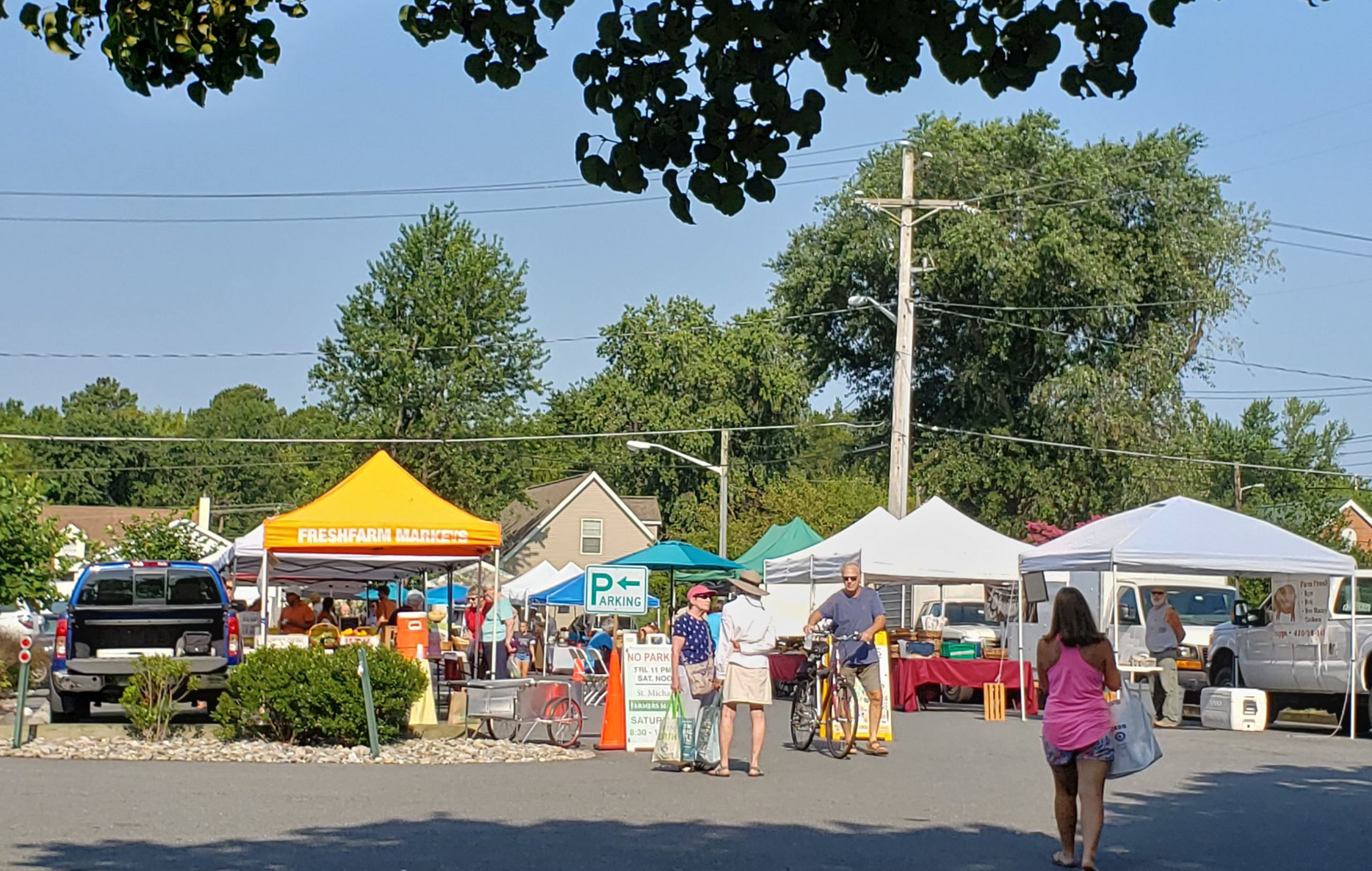
The Classic Motor Museum exhibits classic pre-WWI cars to mid-century muscle cars, motorcycles, and vintage trucks. The museum campus also hosts the Pinkett House, one of the oldest buildings in Saint Michaels. Volunteers with the Museum dismantled the building piece by piece to move it to the Museum campus. The building is now used as the Motor Museum offices and meeting space. Every summer weekend, the Museum hosts the “Cars and Coffee” event.
On those breezy Saturday mornings, local owners of antique cars and, well, really any kind of car, gather together to drink coffee and to compare notes on their prized possessions. It is a relaxed time of browsing pampered and polished cars, appreciating their beauty and style while talking with the proud owners. There were a few curious glances at our Unity, and we happily fielded questions and offered interior tours. It happens all the time!
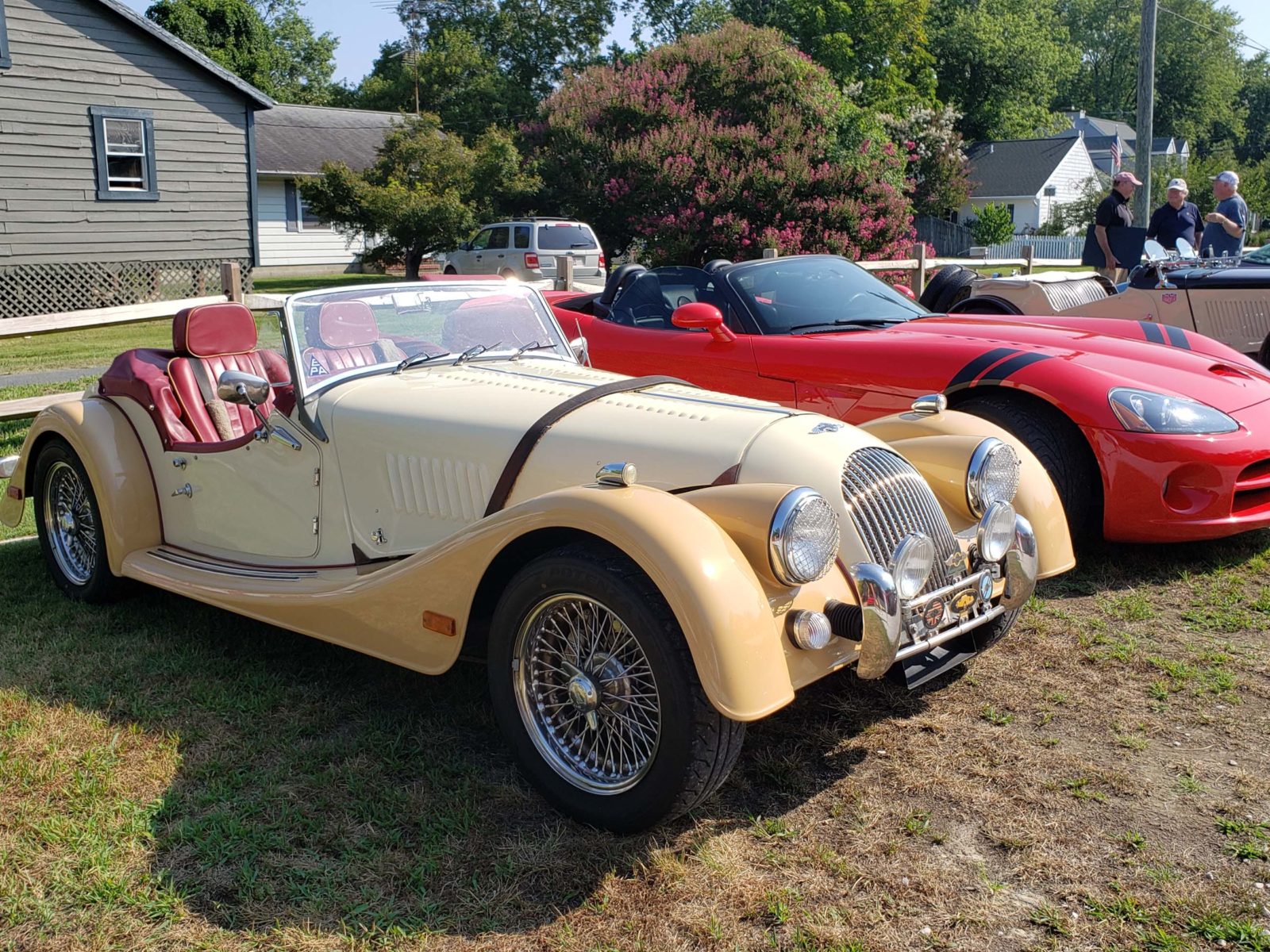
Saint Michaels is a great place to visit almost any time of year. With a host of festivals and events, there is something for every interest, from the Antique and Classic Boat Festival to the Oyster Festival – or maybe the Waterman’s Appreciation Day Boat Rodeo is more your style. Either way, you’ll find a lovely seaside town, a couple of great museums, and lots of stunning scenery for your photo album.
Too soon, it was time to hit the road. We had a four-hour drive ahead to our next destination, and weekend traffic threatened to scuttle any attempt at a schedule. As Jim and I walked around town, we felt quite at home and it occurred to us that we could live here. Who would have thought such a small town could be so inviting?





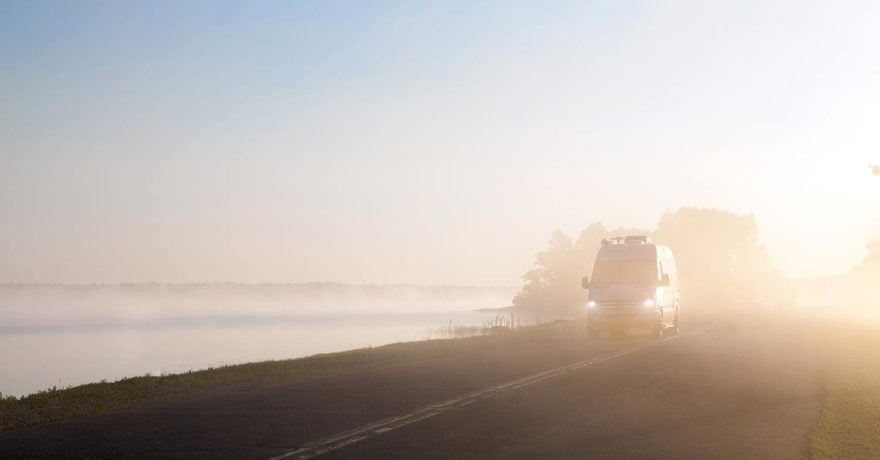
Comments